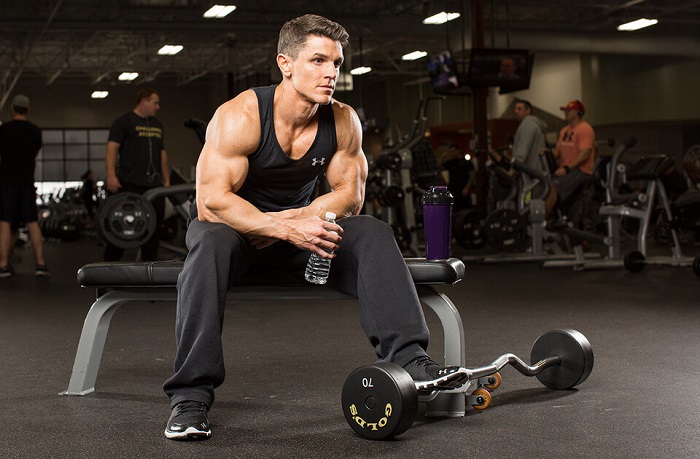Progressive Overload.
Progressive Overload: A concept you need to know in order to grow! This article will look at 5 ways you can incorporate into your workouts and keep building muscle mass.
There is nothing worse when a person who trains with iron, has a gym membership, visits him five times a week, does more than an hour per workout and works on his body, performing the same training program with the same weight, number of sets and repetitions. month after month, year after year. Of course, his body will never change. There is nothing more frustrating than doing the same thing over and over and not working on increasing muscle growth.
If you want to improve your physique so that your muscles are bigger and denser, but you are not getting anything, then the main reason why you are not able to do this is precisely that you are no longer progressing, you are stuck in one place.
Skeletal muscles get stronger in response to training stimuli and you need to keep putting more and more demands on them in order to be successful.
If you don't give the muscles an extra amount of work, forcing them to work harder than they are used to, they have no reason to grow further. Your body will never change unless it is forced to do so, unless forced to do so.
That's why you should never be content with just one workout and run it through you over and over again with the same weight, reps and sets. You will immediately find yourself in a comfort zone and will mark time, working in "idle", and this is the so-called training plateau.
What is progressive overload?
This principle involves a constant increase in the load on the musculoskeletal system, for a regular set of muscle mass, increased strength and endurance.
Simply put, in order to get stronger and stronger, you must constantly force your muscles to work harder than they are used to.
Most often this means increasing the working weights from workout to workout and so on. But there are other ways to increase overload as well.
Conversely, if the load on target muscle groups is at least not maintained or actually reduced, your muscles will atrophy, losing size and strength.
Progressive overload is a very simple yet important concept that lays the foundation upon which successful weight training (resistance) is built.
The principle of progressive overload is not only applied to lifting weights to increase muscle size and strength; it can also be applied to cardiovascular training, creating physiological changes that affect aerobic metabolism and the cardiorespiratory system.
Progressive overload in action.
Let's say you're doing a barbell curl set with your 35kg 8RM, no more, that's the limit for today. Over time, you will become stronger, as a result of which your biceps will add in volume and you will spend much less effort to perform the same 8RM.

Once your biceps have adapted to the initial overload you gave them, what are you doing now? Do you continue to use the same load for the same number of reps, or increase the weight of the weights?
If you continue to train at the same intensity where you do a set of 8 reps with a weight of 35 kg, do not expect further results in muscle growth. There is no reason for your biceps to get bigger or stronger; they are already capable of handling overload.
However, your biceps will get bigger and stronger if you make them work harder. Here are five important ways you can do just that.
5 Methods for Increasing Overload.
1. Increase resistance.
Probably the most obvious way to increase the load on your muscles is to increase the number of repetitions or weights. If all the same 35 kg is too easy for you when lifting the barbell for biceps, try adding 2.5 kg to the neck on each side, which will complicate the exercise a little.
Remember that there is an inverse relationship between adding weight and reps, so as you increase the weight, the reps will drop to some extent. Let's say you did 8 reps in lifting the barbell for biceps with a weight of 35 kg, and with the addition of weight to 40 kg, the repetitions fell by 5 - 6.
This is normal, because after some time the muscles will become stronger, in any case, coping with the weight is no longer 35 kg, but 40 kg and you will gradually get to your 8RM or more reps with this weight and adding weight again, you can repeat this cycle again.
2. Increase reps.
Alternatively, as you get stronger, you can simply do more reps, which is considered another means of increasing overload.
You don't have to stop moving when you reach a certain number of reps; keep doing the exercise until you reach complete muscle(s) fatigue.
But as science says, in order to maximize your full muscle potential and train for mass, you need to work in the 8 to 12 rep range.
Based on this, it turns out that you do not need to endlessly add repetitions, since the muscles will become more enduring due to these additional repetitions, but this will not affect their size and volume in any way.
When you reach 12 reps or so, you should increase the weight and not just try to do more movements. Your reps will drop, but this will keep you in the ideal rep range for muscle hypertrophy.
But if you use the forced repetition method with a training partner in your training, you are working on additional effort and not just increasing the number of repetitions. Therefore, training on the principle of forced repetitions is quite acceptable.

3. Increase training volume.
This variable is another way to increase the overload. Training volume is the number of sets multiplied by the number of repetitions multiplied by the total weight of the weights that you use in your workouts.
By adding more sets to an exercise (or by doing more exercises for a target muscle group and adding another set to that exercise), you are putting extra stress on your muscles.
Keep this in mind, since reps are best in the 8-12 range, and the weights you use won't change much to stay in that rep range, increasing your total sets and at least one exercise is the best way to increase your overall training volume.
This could mean doing 4 sets instead of 3 for all exercises in your training program, and adding one exercise for a specific muscle group, performed from a slightly different angle of work.
4. Increase the frequency of training.
Like total training volume, increasing the frequency of training with which you work a particular muscle group can also increase overload.
This method works especially well for lagging muscles. A traditional workout is a split where you work one muscle group once a week. But if you train these very lagging muscles twice in 7 days, this will give an additional incentive for its development, especially if you want to “catch up” with it in the shortest possible time.
5. Reducing rest between sets.
Another way to increase overload is to reduce the rest interval between sets, NOT EXERCISES, which will allow you to do the same work in less time.

This method will cause your body to become more metabolically efficient with regards to anaerobic exercise (weightlifting). You will be able to lift more in less time. Rest between sets is best reduced weekly by 10-15 seconds. If you rested 60-120 seconds, then the reduction in the rest interval should drop to 30 seconds at least. Then you must return to the original numbers again.
How to use the progressive overload method?
You can incorporate any of these methods into your workouts, but it's best to focus on just one. At the end of the day, muscle adaptation to the load still happens, knowing that there are several methods to increase the overload of your muscles is not so bad. Especially if you know that you simply won’t be able to endlessly add weight to the bar.
Of course, all of this assumes that you are interested in gaining muscle mass by working in the 8 to 12 rep range, which is optimal for hypertrophy.
If you're looking to focus on strength, increasing the weights may be a better option than just doing high reps.
If, on the contrary, you want to achieve muscle endurance, increase the number of repetitions, without adding weight.
Factors such as increasing overall training volume are essential for bodybuilders whose training targets muscle hypertrophy.
Decreasing rest time between sets with increasing reps may be more beneficial for athletes interested in muscular endurance who do not intend to gain muscle mass (athletic gymnastics, crossfit, sprint)
Final conclusion.
In fact, no one will be able to progress every workout, otherwise we would lift tons of iron in every exercise, but this is impossible! Nevertheless, one should not forget about progress and one should try to increase the load as often as possible, of course, not forgetting the technique of performing exercises. Will it happen every workout, through workout, every other month.
All this should continue until you are "stuck" at one weight for a couple of weeks. Then a week's rest, a change in the training program, exercises, approaches, repetitions, and again in a spiral upward, progressing in each exercise.






